Virtually every B2B company has a content marketing strategy these days, but even the most sophisticated companies have a tough time tying it back to revenue. Before Infer, I spent 11 years at Salesforce, where I oversaw the company’s content marketing and social strategy. We were lucky to have the support of a visionary CEO, who encouraged us to embrace social, transform our traditional playbooks, and create success stories that would inspire our customers. While we had the optimal environment to make content marketing work, it was still a struggle to quantify the impact we were making.
How to Tie Content Marketing to Revenue Impact
But demonstrating content marketing success is getting easier every day. Here are five outcomes you can easily measure:
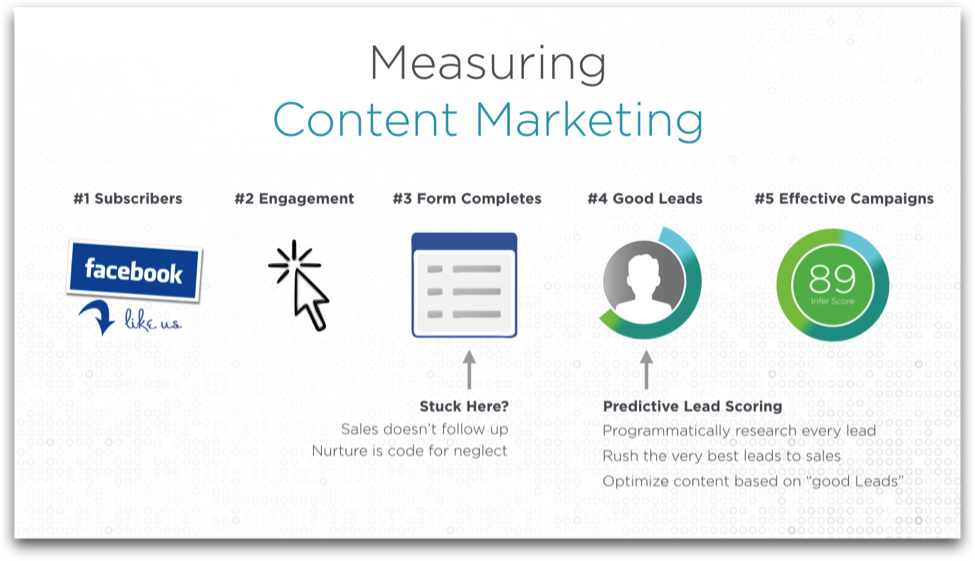
#1 Fans and Followers
In the early days, content marketers should focus on growing their subscribers—a vanity metric that is easy to rally around. At Salesforce, our goal was to reach 1 million subscribers on Twitter, Facebook, and LinkedIn. Once we did that, we knew we’d have a channel that would begin to rival email marketing. And when you’re starting from scratch, the faster you can build your distribution, the easier it is to invest in content. Of course, there are lots of ways to grow your fans. You can promote social channels on your website, through email marketing, and at events. But the most surefire way to get followers quickly is by investing in social advertising.
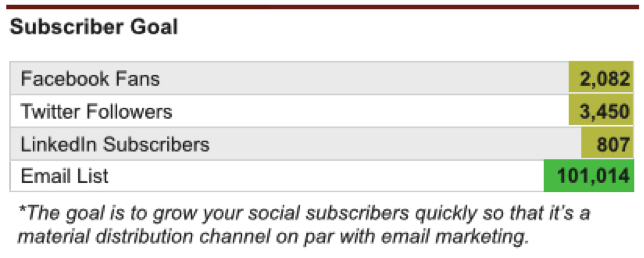
#2 Clicks, Likes, Shares
Once you’ve jump-started your subscriber push, the next step is to think about engagement. Is the content you’re sharing delighting customers or is it falling flat? This is one of the more difficult transformations to drive, because it’s a different mindset from what traditional marketers are used to. Instead of pushing messages and positioning your product, it’s about drawing people in and taking on topics that are bigger than your brand. As Joe Chernov once said, “Content marketing is the art of making the logo smaller.” It’s an important shift, but it takes lots of training to get people thinking about which messages work for each particular medium.
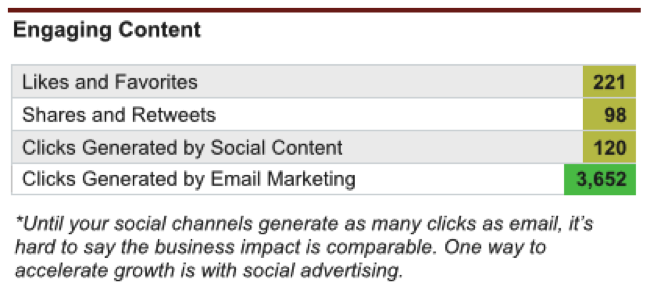
#3 Form Completes
At some point, your content marketing team will and should get pushed to move beyond vanity metrics and tie your work to the sales pipeline. The most common approach is to tease content on social channels and drive people to a gated offer, such as an ebook or webinar. This tactic can generate lots of leads.
For example, one of the last campaigns I worked on at Salesforce was a joint webinar with Facebook, which brought in 10,000 leads. The challenge was, our inside sales team had nowhere near the capacity needed to work through the list. We had a marketing automation system in place, but there wasn’t much trust in the accuracy of its lead scoring. In the end, all those leads were sent to Nurture, and we all know how often nurture is really just code for neglect.
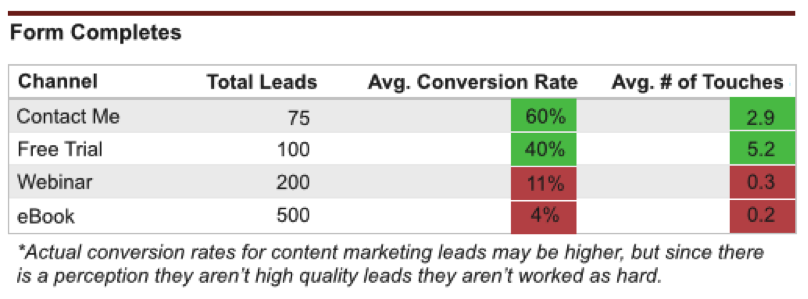
#4 True Marketing Qualified Leads
As a content marketer, you’re caught in a tricky situation. Intuitively you know there is value in the form completes you’re generating, but it often feels nearly impossible to quantify. If your reps make their number on core leads such as contact me requests, free trials, or demos, it can be nearly impossible to get them to work top-of-funnel content marketing leads. They bet branded as low quality and they require a different sales script.
In order to earn the trust of your sales team, and convince them there is real value in content marketing leads, you need an automated way to research them and determine fit. Predictive lead scoring is game changing for content marketers because it lets you quantify how many good leads you’re creating and makes it easy to pass only the very hottest leads over to sales.
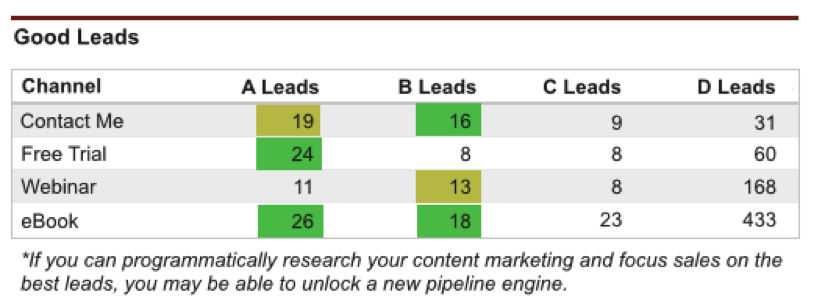
#5 Content That Actually Works
Predictive lead scoring also changes how you evaluate content. Instead of relying on page views or form completes, you can measure the number of good leads generated. Even if they’re not ready to buy this quarter, you’ll be able to determine if your content attracts people who are good fits for your product. This is great insight to help you guide your investments and justify more resources.
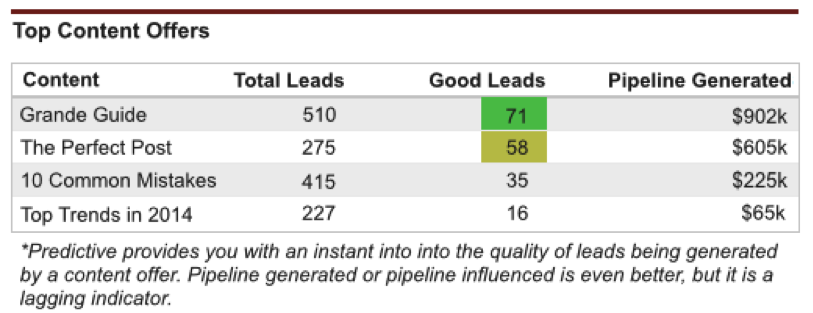
Of course, even with these metrics to demonstrate the business impact of your content marketing initiatives, it may take time to get your sales team on board. But once you “show them the money” with prospects who actually do buy, you can start to change behavior and get more bang for your content marketing buck. And if you can get dedicated sales reps assigned to focus on high-scoring content marketing leads with a custom script, you’ll boost results even further.

